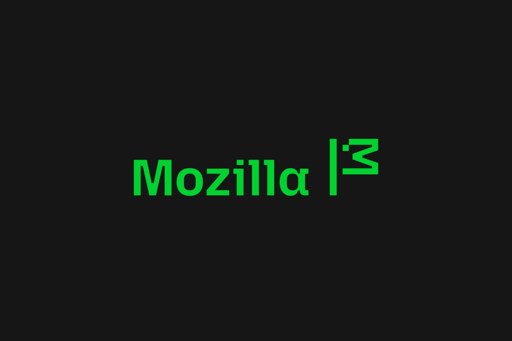‘If I switch it off, my girlfriend might think I’m cheating’: inside the rise of couples location sharing
-
My wife and I have each other's locations. We trust each other. We just like having that information available. It's really not that hard to understand.
Not hard to understand, no, but many find it to be creepy and invasive.
-
This is a huge no from me. My SO doesn't need my location, and sharing it has a lot of potential downsides, like:
- phone manufacturer selling it to advertisers
- gov't getting it and I accidentally trust trigger some alarm
- data getting exposed in a breach
- apps without location access getting it through some means
There's a lot of potential downside and the upside is... my SO knows when I'm almost home?
Yeah, no. Maybe I'll share if I'm doing something risky like hiking alone, but that's never staying on constantly.
Call me old school but I just text my SO when I am almost home.
-
Safety concerns aside, you should trust your partner enough to not need to track them
For me, knowing my spouse’s location is just convenient for knowing ETA without bothering her. It’s not really about trust at all
-
It sounds like the age-old “nothing to hide” argument.
It's really not, though. For many couples (including my own relationship), this is something we talked about before implementing. We both decided that since we have the technology, we should use it to our advantage....so we do. Right now we're using Life360, but I've already implemented Traccar (self-hosted and accessed via Home Assistant) for our older kids who have phones (Pinwheel), and I plan on extending that capability to my wife as well, so we can dump Life360.
If everyone consents and you trust the service, I guess that's fine.
I just personally don't see the benefit. My area has a really low crime rate, my kids don't have phones and don't go anywhere on their own anyway (they hang out w/ neighbors or we drive whem somewhere), and my SO and I just go between work and home and rarely anywhere else. If we have a unique schedule, we let each other know.
The only time I think I'd want it is if I'm doing something potentially risky, like going on a hike on my own, which I almost never do. That's pretty much it.
When my kids get phones, I plan to follow the same policy. If they go somewhere, they need to let us know where they're going, who a backup contact is (i.e. if they lose their phone or it dies), and when they'll be home. I don't need to know exactly where they are if I trust them to inform me if plans change.
-
Of all the dystopian things, this is probably the most dystopian thing I’ve read lately.
This is horrible.
Here’s something even worse, IMO, if you’d like to check it out.
-
Call me old school but I just text my SO when I am almost home.
My route has pretty much no stoplights, so there's not really an opportunity to text. But I send a text when I leave and if I'm delayed (i.e. I'll have an opportunity to text).
It works well.
-
My wife and I have each other's locations. We trust each other. We just like having that information available. It's really not that hard to understand.
It sounds like you and your wife have a healthy relationship. That’s awesome! But, for possessive and controlling relationships, surveillance can be harmful.
Personally, my location is shared with my sister. I’d share it with my partner but he is a bit of a Luddite. I wouldn’t be sharing because he asked, I would be doing it so he could find me easily in an emergency.
And, I wouldn’t ask him to share his. If he turned it on and wanted me to have it, that’s cool. And if not, that’s cool too.
-
There's no upside
- Know when they come home or if they are stuck in traffic
- "oh you are still in the store can you get me ..."
- security if they get kidnapped
It is insanely useful to know where your partner is. It is not necessary. It is still useful. I would not allow my partner 24/7 location information. It is still useful. I don't trust any app/manufacturer that allows such a feature. It is still useful.
-They'll be here when they be here
-The tracker is also a communicator. "Hey are you still at the store? Good can you grab.." doesn't add that much time to that convo
-

-
My SO can just call me, and they do about every other day when I'm inevitably stuck in traffic due to some accident during rush hour.
My SO and I call each other very frequently. It takes 10s to call and ask me if I'm stuck in traffic or something. Maybe it takes 5 to check an app, but saving a few seconds isn't worth the unlikely but possible downsides.
Where's the upside vs alternatives that don't have those extra issues?
Is it realy so incomprehensible to see how useful it is? I feel like most people in this threat just close their eyes and scream. Yes you can call, yes you can find a different solution to every problem. But it is still fucking convenient to just know where somebody is without you having to ask them having to actively respond.
-
This post did not contain any content.
After 30 years of marriage, my wife floated the idea of turning this on. I looked at her like she had two heads.
Why would anyone be willfully surveilled? You know its not just your partner that has access to that data when you have location services enabled.
-
Not hard to understand, no, but many find it to be creepy and invasive.
Yeah like .... I trust my husband, and I am also not his keeper, so I do not need to know where he is 24/7. I find it very odd and invasive.
-
This is a huge no from me. My SO doesn't need my location, and sharing it has a lot of potential downsides, like:
- phone manufacturer selling it to advertisers
- gov't getting it and I accidentally trust trigger some alarm
- data getting exposed in a breach
- apps without location access getting it through some means
There's a lot of potential downside and the upside is... my SO knows when I'm almost home?
Yeah, no. Maybe I'll share if I'm doing something risky like hiking alone, but that's never staying on constantly.
I don't agree with the practice but I do see the point - it reduces anxiety and gives your partner a sense that you're okay for relationships where trust is strong. For toxic relationships this should absolutely not be a thing.
As far as governments or companies selling the data... You can use some self-hosted services on a de-googled GrapheneOS or LineageOS install and use sattelite location only. Then, pipe that to said self hosted solution that doesn't sell your data like homeassistant or whatever.
-
I don't agree with the practice but I do see the point - it reduces anxiety and gives your partner a sense that you're okay for relationships where trust is strong. For toxic relationships this should absolutely not be a thing.
As far as governments or companies selling the data... You can use some self-hosted services on a de-googled GrapheneOS or LineageOS install and use sattelite location only. Then, pipe that to said self hosted solution that doesn't sell your data like homeassistant or whatever.
Idk, I think it would increase anxiety for my SO, and we have a lot of trust. For example, if I take a coworker home, go out to lunch, etc w/o telling my SO, and they see that deviation in my routine, they could start doubting that trust. But if they just don't see it, they just rely on what we tell each other, and if it's not important, it doesn't need to be communicated and can't create that anxiety.
At least that's my take. My SO is really trusting, but also quite anxious because of nonsense they read on SM and whatnot, so a deviation can create a lot of unnecessary concern.
But yeah, I wouldn't be completely opposed to a self-hosted solution here. I use GrapheneOS, and if the UX isn't too terrible (i.e. easy to toggle off and on), it could be really useful for something like going hiking alone or whatever.
-
This post did not contain any content.
I have my location shared with my wife because while I was working out of the house I got tired of answering the same text message ("how far from home are you so I can start dinner?") every afternoon. She's the only one in the world I have no secrets from, so I just never turned it off. I honestly don't know if she still knows I've got it shared with her.
-
Is it realy so incomprehensible to see how useful it is? I feel like most people in this threat just close their eyes and scream. Yes you can call, yes you can find a different solution to every problem. But it is still fucking convenient to just know where somebody is without you having to ask them having to actively respond.
Yes, I can see how someone could consider it useful, but that always needs to be compared to alternatives and downsides. For example, the government knowing exactly where I am at all times could be useful if I get abducted or something, but there are so many potential downsides and limited upsides to that to the point that I can't consider it a reasonable option, therefore it's DOA.
So yeah, I don't see location sharing as net useful, especially when the alternatives are almost equivalent in convenience and successfully solving the problem. My routine is the same almost every day, and deviations are really easy to communicate w/ a quick text.
Location sharing is a solution in search of a problem.
-
Not hard to understand, no, but many find it to be creepy and invasive.
Not hard to understand, no, but many find it to be creepy and invasive.
Those people are free to not use the tech. Being forced to use the tech, however, is absolutely a problem.
-
There's no upside
- Know when they come home or if they are stuck in traffic
- "oh you are still in the store can you get me ..."
- security if they get kidnapped
It is insanely useful to know where your partner is. It is not necessary. It is still useful. I would not allow my partner 24/7 location information. It is still useful. I don't trust any app/manufacturer that allows such a feature. It is still useful.
Know when they come home or if they are stuck in traffic
Look at maps and see how traffic is on their route if they're late
“oh you are still in the store can you get me …”
Tell each other when you are going to the store beforehand and ask if you need anything.
security if they get kidnapped
Very unlikely to happen in the first place and competent kidnappers would toss their phone right away anyway.
-
This post did not contain any content.
Starting this by saying: Using tracking apps to see what someone's doing 24/7 or worrying about them cheating is insane and is a solid NO, full stop.
But I do understand why people use tracking apps, and I wish we had good FOSS alternatives. A tracking/location sharing app where the trackee can turn it on/off anytime they want (after using a password/biometrics, to prevent others from messing with it), so loved ones can be sure you made it to your destination.
I don't want people stalking their kids, judging their friends for the places they go, surveiling if someone's a cheater, or worst of all, having their data be sold by the shitty companies that run these services.
I've read stories that have scared me and made me wish I could do something like that when I'm out late. I had to (unfortunately) use Live360 during a field trip in another country cause the teachers needed to keep track of us. I understand safety-wise that these apps are vital
-
Jesus fuck, what did people do with their spouses and kids before phones? Trust them?
Sounds unlikely.
private investigators
-
It sounds like you and your wife have a healthy relationship. That’s awesome! But, for possessive and controlling relationships, surveillance can be harmful.
Personally, my location is shared with my sister. I’d share it with my partner but he is a bit of a Luddite. I wouldn’t be sharing because he asked, I would be doing it so he could find me easily in an emergency.
And, I wouldn’t ask him to share his. If he turned it on and wanted me to have it, that’s cool. And if not, that’s cool too.
But, for possessive and controlling relationships, surveillance can be harmful.
Absolutely. My previous marriage was like that. Luckily the topic of location tracking never came up.






